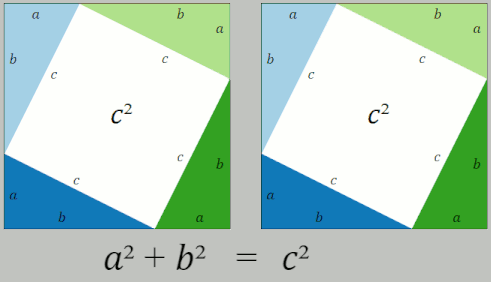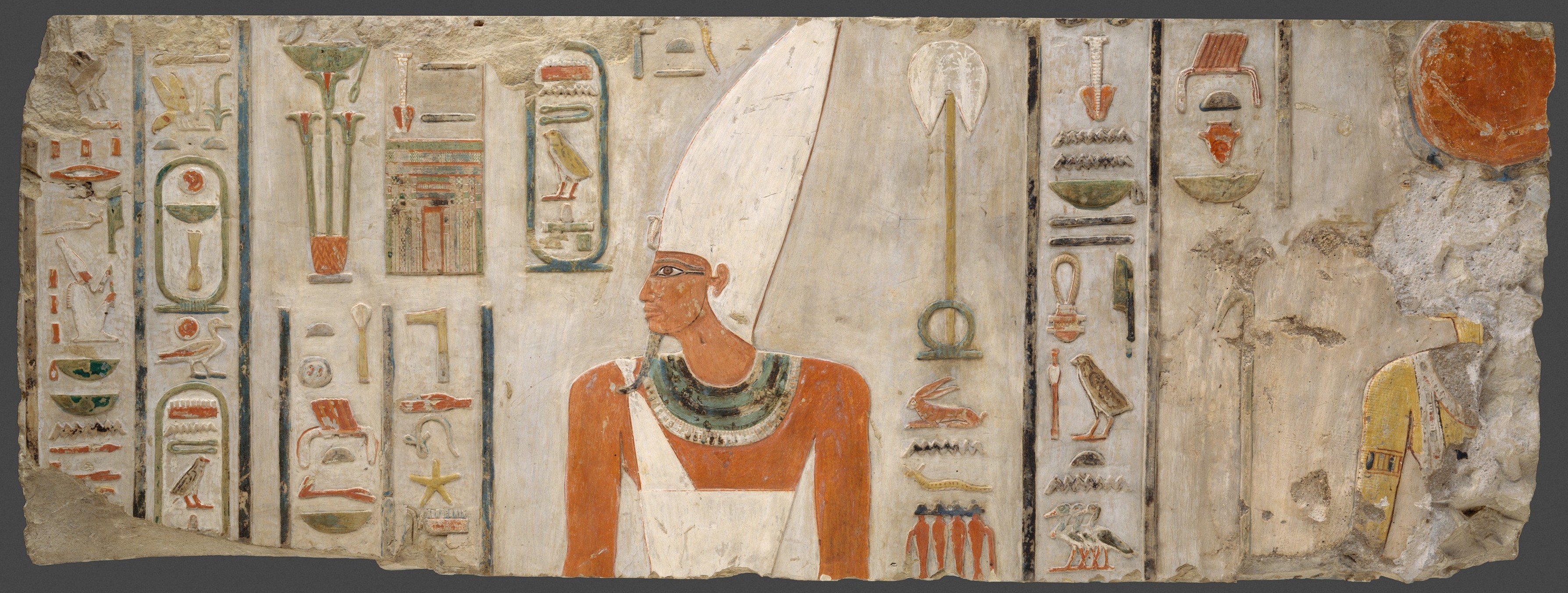|
Knotted Cord
A knotted cord was a primitive surveyor's tool for measuring distances. It is a length of cord with knots at regular intervals. They were eventually replaced by surveyor's chains, which being made of metal were less prone to stretching and thus were more accurate and consistent. Knotted cords were used by many ancient cultures. The Greek schoenus is referred to as a rope used to measure land. Ropes generally became cables and chains with Pythagoras making the Greek agros a chain of 10 stadia equal to a nautical mile c 540 BC. The Romans used a waxed cord for measuring distances. A knotted cord 12 lengths long (the units do not matter) closed into a loop can be used to lay out a right angle by forming the loop of cord into a 3–4–5 triangle. This could be used for laying out the corner of a field or a building foundation, for instance. Ancient Egypt Knotted cords were used by rope stretchers, royal surveyors who measured out the sides of fields (Egyptian ''3ht''). The knot ... [...More Info...] [...Related Items...] OR: [Wikipedia] [Google] [Baidu] |
Inca Empire
The Inca Empire, officially known as the Realm of the Four Parts (, ), was the largest empire in pre-Columbian America. The administrative, political, and military center of the empire was in the city of Cusco. The History of the Incas, Inca civilisation rose from the Peruvian highlands sometime in the early 13th century. The Portuguese explorer Aleixo Garcia was the first European to reach the Inca Empire in 1524. Later, in 1532, the Spanish Empire, Spanish began the conquest of the Inca Empire, and by 1572 Neo-Inca State, the last Inca state was fully conquered. From 1438 to 1533, the Incas incorporated a large portion of western South America, centered on the Andes, Andean Mountains, using conquest and peaceful assimilation, among other methods. At its largest, the empire joined modern-day Peru with what are now western Ecuador, western and south-central Bolivia, northwest Argentina, the southwesternmost tip of Colombia and Incas in Central Chile, a large portion of modern- ... [...More Info...] [...Related Items...] OR: [Wikipedia] [Google] [Baidu] |
Pythagoras' Theorem
In mathematics, the Pythagorean theorem or Pythagoras' theorem is a fundamental relation in Euclidean geometry between the three sides of a right triangle. It states that the area of the square whose side is the hypotenuse (the side opposite the right angle) is equal to the sum of the areas of the squares on the other two sides. The theorem can be written as an equation relating the lengths of the sides , and the hypotenuse , sometimes called the Pythagorean equation: :a^2 + b^2 = c^2 . The theorem is named for the Greek philosopher Pythagoras, born around 570 BC. The theorem has been proved numerous times by many different methods – possibly the most for any mathematical theorem. The proofs are diverse, including both geometric proofs and algebraic proofs, with some dating back thousands of years. When Euclidean space is represented by a Cartesian coordinate system in analytic geometry, Euclidean distance satisfies the Pythagorean relation: the squared distance betw ... [...More Info...] [...Related Items...] OR: [Wikipedia] [Google] [Baidu] |
Rope (unit)
A rope may refer to any of several units of measurement initially determined or formed by ropes or knotted cords. Length The Ancient Greek units, Greco-Roman units of measurement, Roman schoenus, supposedly based on an Ancient Egyptian units, Egyptian unit derived from a wound juncaceae, reed knotted cord, measuring rope, may also be given in translation as a "rope". According to Strabo, it varied in length between 30 and 120 stadia (unit), stadia (roughly 5 to 20 km) depending on local custom. The Byzantine units, Byzantine equivalent, the schoinion or "little rope", varied between 60 and 72 Greek feet depending upon the location. The Thai units, Thai sen (unit), sen of 20 Thai fathoms or 40 m also means and is translated "rope". The Somerset rope was a former English units, English unit used in drainage and hedging. It was 20 feet (unit), feet (now precisely 1E0 m, 6.096 m). Area The Ancient Romans, Romans used the schoenus as an alternative name for the h ... [...More Info...] [...Related Items...] OR: [Wikipedia] [Google] [Baidu] |
Arithmetic Rope
Arithmetic is an elementary branch of mathematics that deals with numerical operations like addition, subtraction, multiplication, and division. In a wider sense, it also includes exponentiation, extraction of roots, and taking logarithms. Arithmetic systems can be distinguished based on the type of numbers they operate on. Integer arithmetic is about calculations with positive and negative integers. Rational number arithmetic involves operations on fractions of integers. Real number arithmetic is about calculations with real numbers, which include both rational and irrational numbers. Another distinction is based on the numeral system employed to perform calculations. Decimal arithmetic is the most common. It uses the basic numerals from 0 to 9 and their combinations to express numbers. Binary arithmetic, by contrast, is used by most computers and represents numbers as combinations of the basic numerals 0 and 1. Computer arithmetic deals with the specificities of the implemen ... [...More Info...] [...Related Items...] OR: [Wikipedia] [Google] [Baidu] |
Middle Kingdom Of Egypt
The Middle Kingdom of Egypt (also known as The Period of Reunification) is the period in the history of ancient Egypt following a period of political division known as the First Intermediate Period of Egypt, First Intermediate Period. The Middle Kingdom lasted from approximately 2040 to 1782 BC, stretching from the reunification of Egypt under the reign of Mentuhotep II in the Eleventh Dynasty of Egypt, Eleventh Dynasty to the end of the Twelfth Dynasty of Egypt, Twelfth Dynasty. The kings of the Eleventh Dynasty ruled from Thebes, Egypt, Thebes and the kings of the Twelfth Dynasty ruled from Lisht, el-Lisht. The Periodization of ancient Egypt, concept of the Middle Kingdom as one of three golden ages was coined in 1845 by German Egyptologist Christian Charles Josias von Bunsen, Baron von Bunsen, and its definition evolved significantly throughout the 19th and 20th centuries. Some scholars also include the Thirteenth Dynasty of Egypt wholly into this period, in which case the Mi ... [...More Info...] [...Related Items...] OR: [Wikipedia] [Google] [Baidu] |
Berlin Papyrus 6619
The Berlin Papyrus 6619, simply called the Berlin Papyrus when the context makes it clear, is one of the primary sources of ancient Egyptian mathematics. One of the two mathematics problems on the Papyrus may suggest that the ancient Egyptians knew the Pythagorean theorem. Description, dating, and provenance The Berlin Papyrus 6619 is an ancient Egyptian papyrus document from the Middle Kingdom, second half of the 12th (c. 1990–1800 BC) or 13th Dynasty (c. 1800 BC – 1649 BC). It is written in the hieratic script. The two readable fragments were published by Hans Schack-Schackenburg in 1900 and 1902. Connection to the Pythagorean theorem The Berlin Papyrus contains two problems, the first stated as "the area of a square of 100 is equal to that of two smaller squares. The side of one is ½ + ¼ the side of the other."Richard J. Gillings, ''Mathematics in the Time of the Pharaohs'', Dover, New York, 1982, 161. The interest in the question may suggest some knowledge of th ... [...More Info...] [...Related Items...] OR: [Wikipedia] [Google] [Baidu] |
De Iside Et Osiride
The ''Moralia'' (Latin for "Morals", "Customs" or "Mores"; , ''Ethiká'') is a set of essays ascribed to the 1st-century scholar Plutarch of Chaeronea. The eclectic collection contains 78 essays and transcribed speeches. They provide insights into Roman and Greek life, but they also include timeless observations. Many generations of Europeans have read or imitated them, including Michel de Montaigne, Renaissance Humanists and Enlightenment philosophers. Contents General structure The ''Moralia'' include ''On the Fortune or the Virtue of Alexander the Great'', an important adjunct to Plutarch's ''Life'' of the great general; ''On the Worship of Isis and Osiris'', a crucial source of information on Egyptian religious rites; and ''On the Malice of Herodotus'' (which may, like the orations on Alexander's accomplishments, have been a rhetorical exercise), in which Plutarch criticizes what he sees as systematic bias in the ''Histories'' of Herodotus; along with more philosophical ... [...More Info...] [...Related Items...] OR: [Wikipedia] [Google] [Baidu] |
Plutarch
Plutarch (; , ''Ploútarchos'', ; – 120s) was a Greek Middle Platonist philosopher, historian, biographer, essayist, and priest at the Temple of Apollo (Delphi), Temple of Apollo in Delphi. He is known primarily for his ''Parallel Lives'', a series of biographies of illustrious Greeks and Romans, and ''Moralia'', a collection of essays and speeches. Upon becoming a Roman citizen, he was possibly named Lucius Mestrius Plutarchus (). Family Plutarch was born to a prominent family in the small town of Chaeronea, about east of Delphi, in the Greek region of Boeotia. His family was long established in the town; his father was named Autobulus and his grandfather was named Lamprias. His brothers, Timon and Lamprias, are frequently mentioned in his essays and dialogues, which speak of Timon in particular in the most affectionate terms. Studies and life Plutarch studied mathematics and philosophy in Athens under Ammonius of Athens, Ammonius from AD 66 to 67. He attended th ... [...More Info...] [...Related Items...] OR: [Wikipedia] [Google] [Baidu] |
Moritz Cantor
Moritz Benedikt Cantor (23 August 1829 – 10 April 1920) was a German historian of mathematics. Biography Cantor was born at Mannheim. He came from a Sephardi Jewish family that had emigrated to the Netherlands from Portugal, another branch of which had established itself in Russia. In his early youth, Moritz Cantor was not strong enough to go to school, and his parents decided to educate him at home. Later, however, he was admitted to an advanced class of the Gymnasium in Mannheim. From there he went to the University of Heidelberg in 1848, and soon after to the University of Göttingen, where he studied under Gauss and Weber, and where Stern awakened in him a strong interest in historical research. After obtaining his PhD at the University of Heidelberg in 1851, he went to Berlin, where he eagerly followed the lectures of Peter Gustav Lejeune Dirichlet; and upon his return to Heidelberg in 1853, he was appointed privat-docent at the university. In 1863, he was promoted ... [...More Info...] [...Related Items...] OR: [Wikipedia] [Google] [Baidu] |
Pyramid
A pyramid () is a structure whose visible surfaces are triangular in broad outline and converge toward the top, making the appearance roughly a pyramid in the geometric sense. The base of a pyramid can be of any polygon shape, such as triangular or quadrilateral, and its surface-lines either filled or stepped. A pyramid has the majority of its mass closer to the ground with less mass towards the pyramidion at the apex. This is due to the gradual decrease in the cross-sectional area along the vertical axis with increasing elevation. This offers a weight distribution that allowed early civilizations to create monumental structures.Ancient civilizations in many parts of the world pioneered the building of pyramids. The largest pyramid by volume is the Mesoamerican Great Pyramid of Cholula, in the Mexican state of Puebla. For millennia, the largest structures on Earth were pyramids—first the Red Pyramid in the Dashur Necropolis and then the Great Pyramid of Khufu, bot ... [...More Info...] [...Related Items...] OR: [Wikipedia] [Google] [Baidu] |
Mathematics And Architecture
Mathematics and architecture are related, since architecture, mathematics and art, like some other arts, uses mathematics for several reasons. Apart from the mathematics needed when engineering buildings, architects use geometry: to define the spatial form of a building; from the Pythagoreanism, Pythagoreans of the sixth century BC onwards, to create architectural forms considered harmonious, and thus to lay out buildings and their surroundings according to mathematical, aesthetic and sometimes religious principles; to decorate buildings with mathematical objects such as tessellations; and to meet environmental goals, such as to minimise wind speeds around the bases of tall buildings. In Ancient Egyptian architecture, ancient Egypt, Ancient Greek architecture, ancient Greece, Architecture of India, India, and the Islamic architecture, Islamic world, buildings including Egyptian pyramids, pyramids, temples, mosques, palaces and mausoleums were laid out with specific proportio ... [...More Info...] [...Related Items...] OR: [Wikipedia] [Google] [Baidu] |
Rhind Mathematical Papyrus
The Rhind Mathematical Papyrus (RMP; also designated as papyrus British Museum 10057, pBM 10058, and Brooklyn Museum 37.1784Ea-b) is one of the best known examples of ancient Egyptian mathematics. It is one of two well-known mathematical papyri, along with the Moscow Mathematical Papyrus. The Rhind Papyrus is the larger, but younger, of the two. In the papyrus' opening paragraphs Ahmes presents the papyrus as giving "Accurate reckoning for inquiring into things, and the knowledge of all things, mysteries ... all secrets". He continues: This book was copied in regnal year 33, month 4 of Season of the Inundation, Akhet, under the majesty of the King of Upper and Lower Egypt, Awserre, given life, from an ancient copy made in the time of the King of Upper and Lower Egypt Nimaatre. The scribe Ahmose writes this copy. Several books and articles about the Rhind Mathematical Papyrus have been published, and a handful of these stand out. ''The Rhind Papyrus'' was published in 192 ... [...More Info...] [...Related Items...] OR: [Wikipedia] [Google] [Baidu] |







